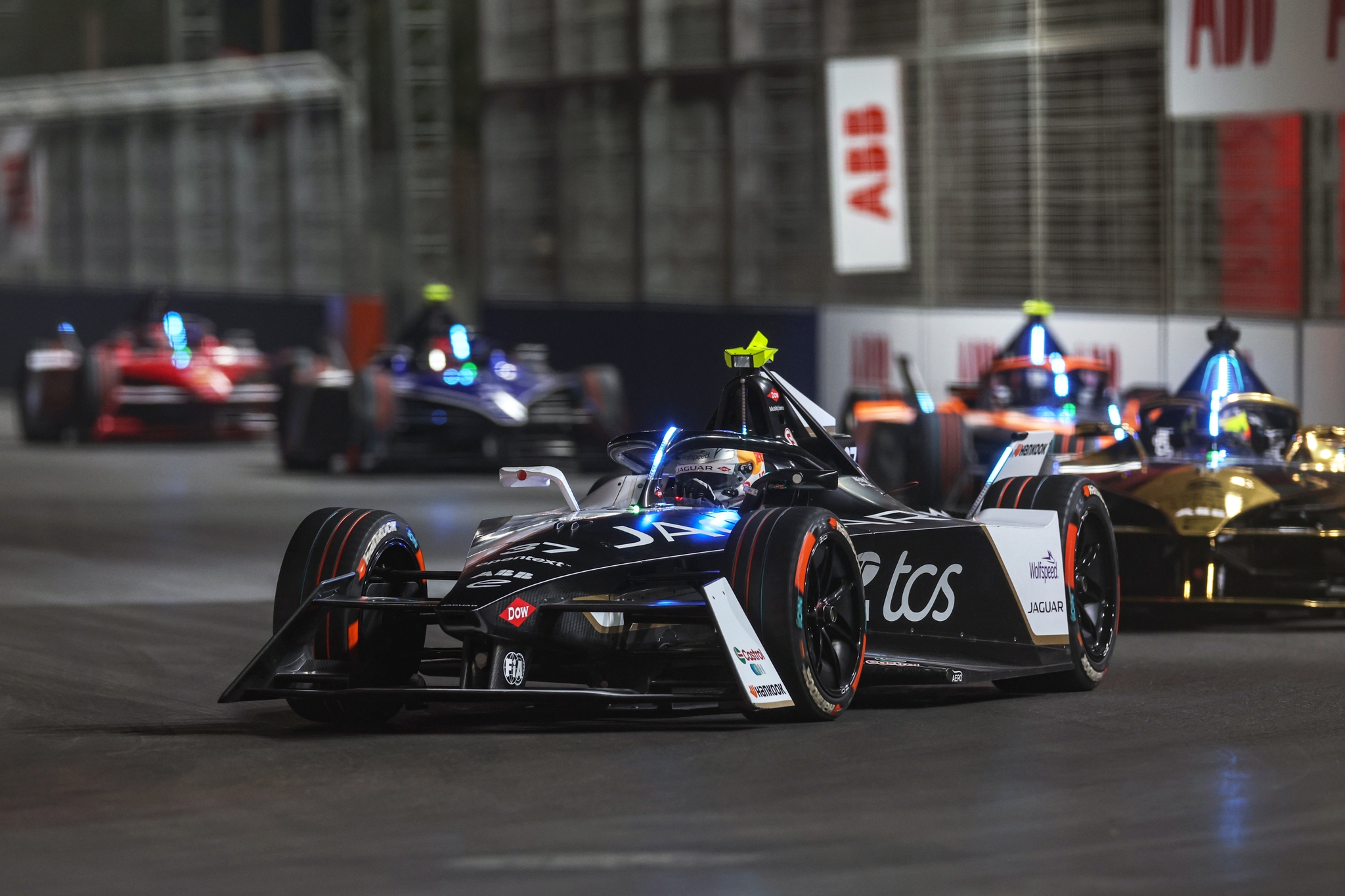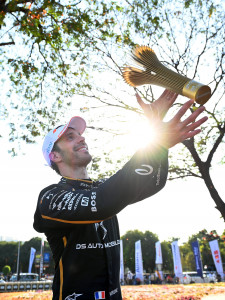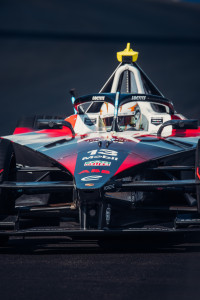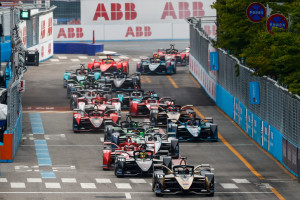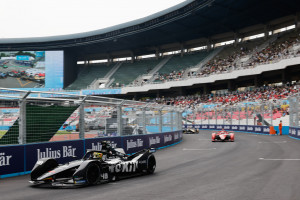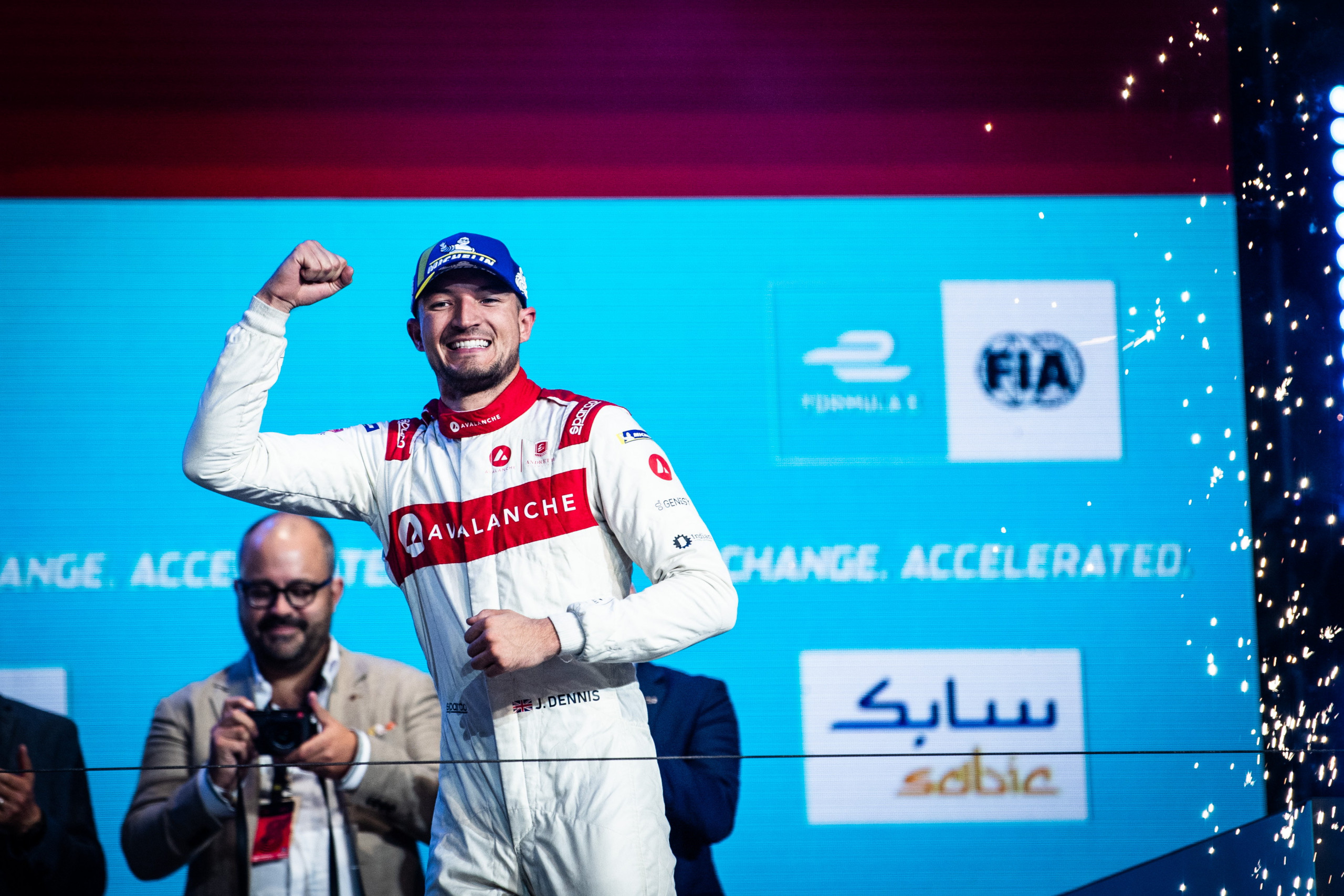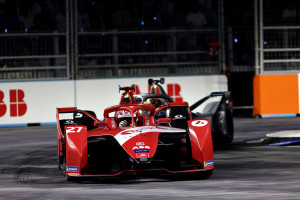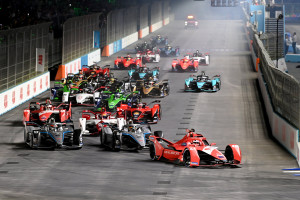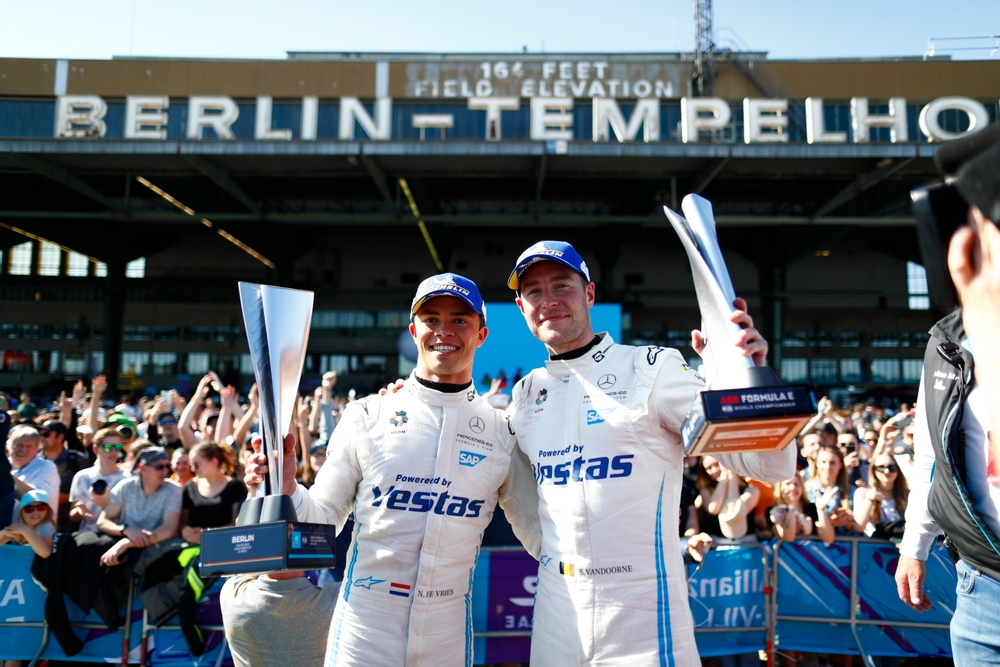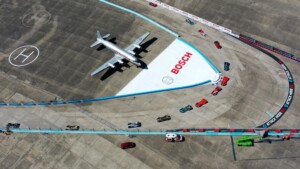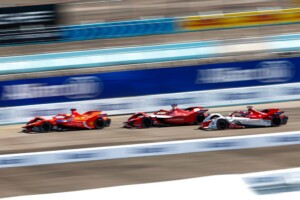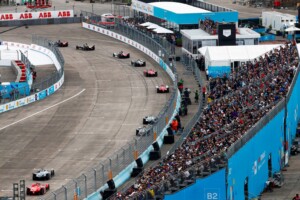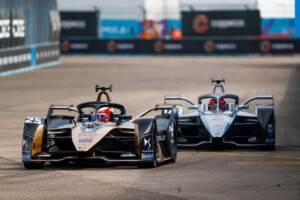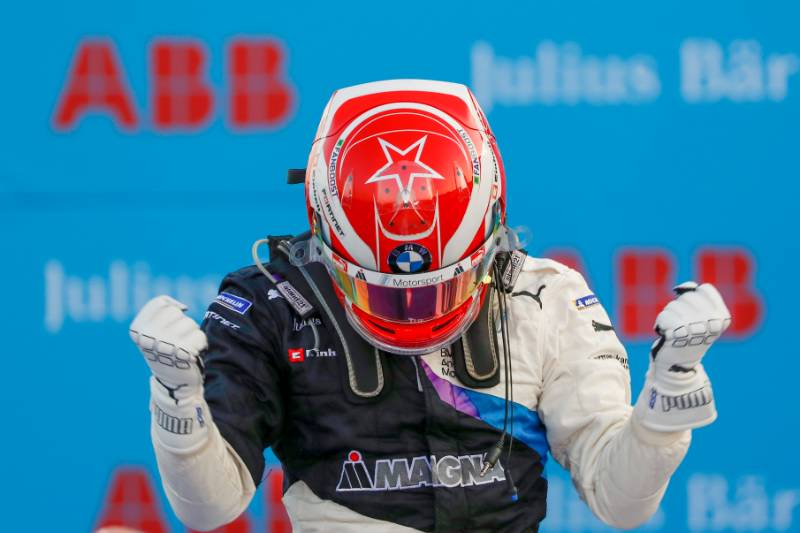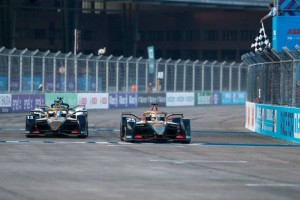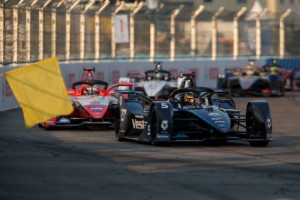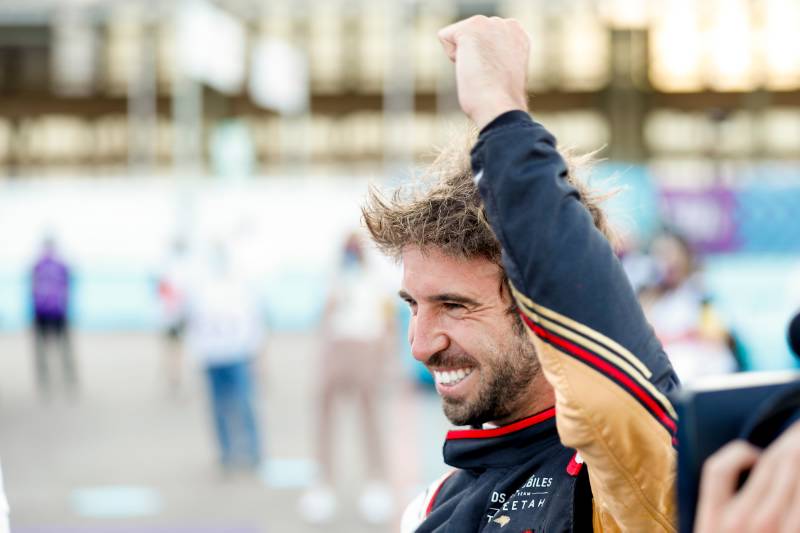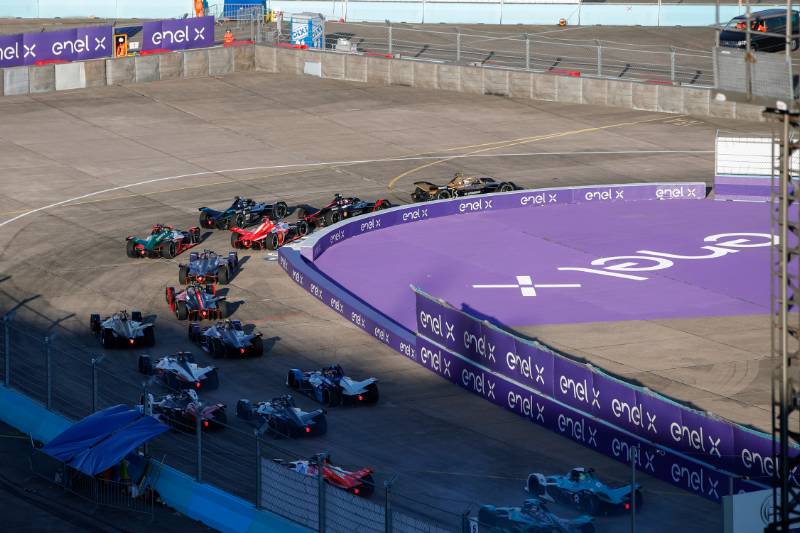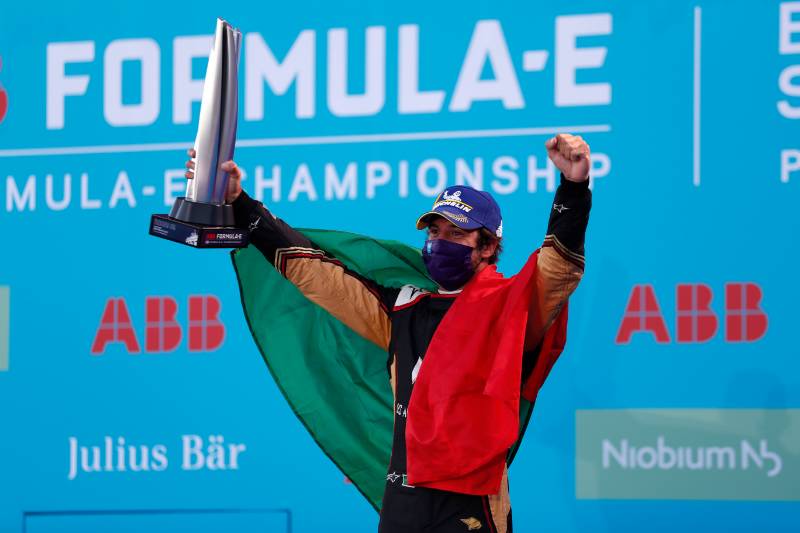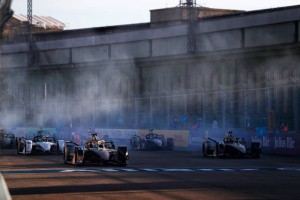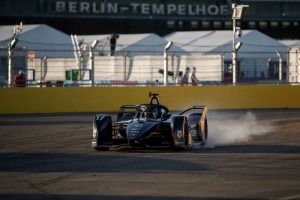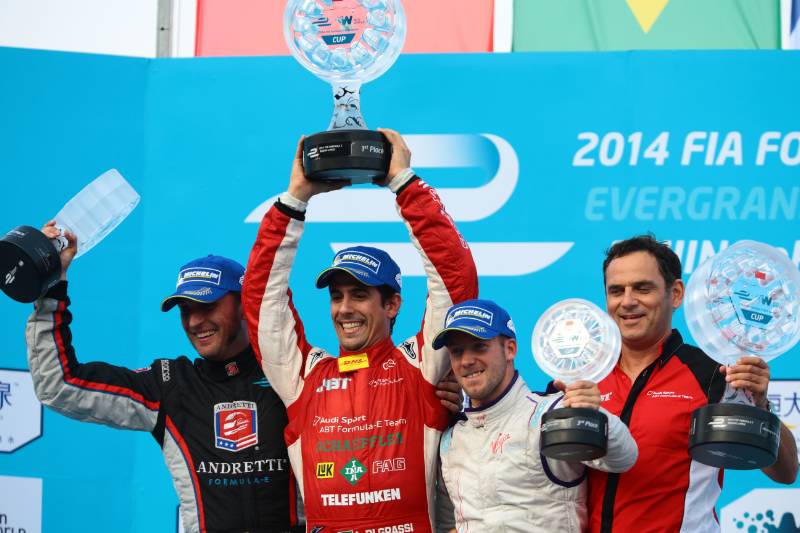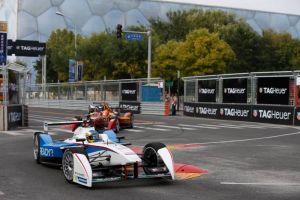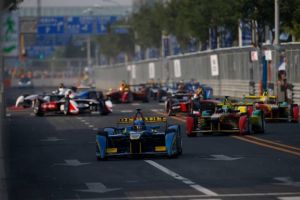Round two of the Formula E championship kicked off this weekend in Diriyah, a firm favourite on the electric series calendar, and it certainly did not disappoint. Jean-Eric Vergne led the grid away, taking his first pole position in two seasons, ahead of Mitch Evans in P2. There was a bit of wheel bashing at the start with Vergne taking attack mode very early. This caused him to fall down to P3, as Evans was promoted to the race lead with current world champion Jake Dennis in the hunt in second position. However, in a race where stategy seemed to reign, Evans took attack mode, which allowed Dennis to swoop into the lead. However, the excitement for the world current did not last long – he soon lost the position to Vergne when taking his own attack mode on lap 7. Vergne copied Dennis’ actions the following lap, allowing Evans into contention for the win. Dennis was able to build up a lead in order to take his second attack mode and keep the lead. Evans managed to hold onto P2 while overtaking Vergne on the straight to turn 17. In the dying stages of the race, there was back and fourth battles between the top three – Evans, Vergne and Dennis. Evans tried to take the lead from Dennis but he overestimated the overtake, went deep into turn 17 and Dennis remained in the lead.
Vergne and Evans continued to battle one another, allowing Dennis to continue to pull clear. Title hopeful Nick Cassidy battled Max Gunther for one of the lower points paying positions, only for this late surge to be hindered by collision with Sam Bird’s McLaren. The Jaguars struggled in the race due to miscommunication with team orders having an adverse effect. On the last lap, Evans tried to overtake Vergne for second place, he overestimated the gap and fell behind Bird. Dennis claimed victory in the desert by over 10 seconds with Vergne P2 and Cassidy taking the final podium position. Bird finished ahead of Evans in P4 and P5 respectively, Norman Nato claimed P6 ahead of Guenther, Wehrlein claimed P8 whilst Sergio Sette Camara and Robin Frijns rounded out the top ten.
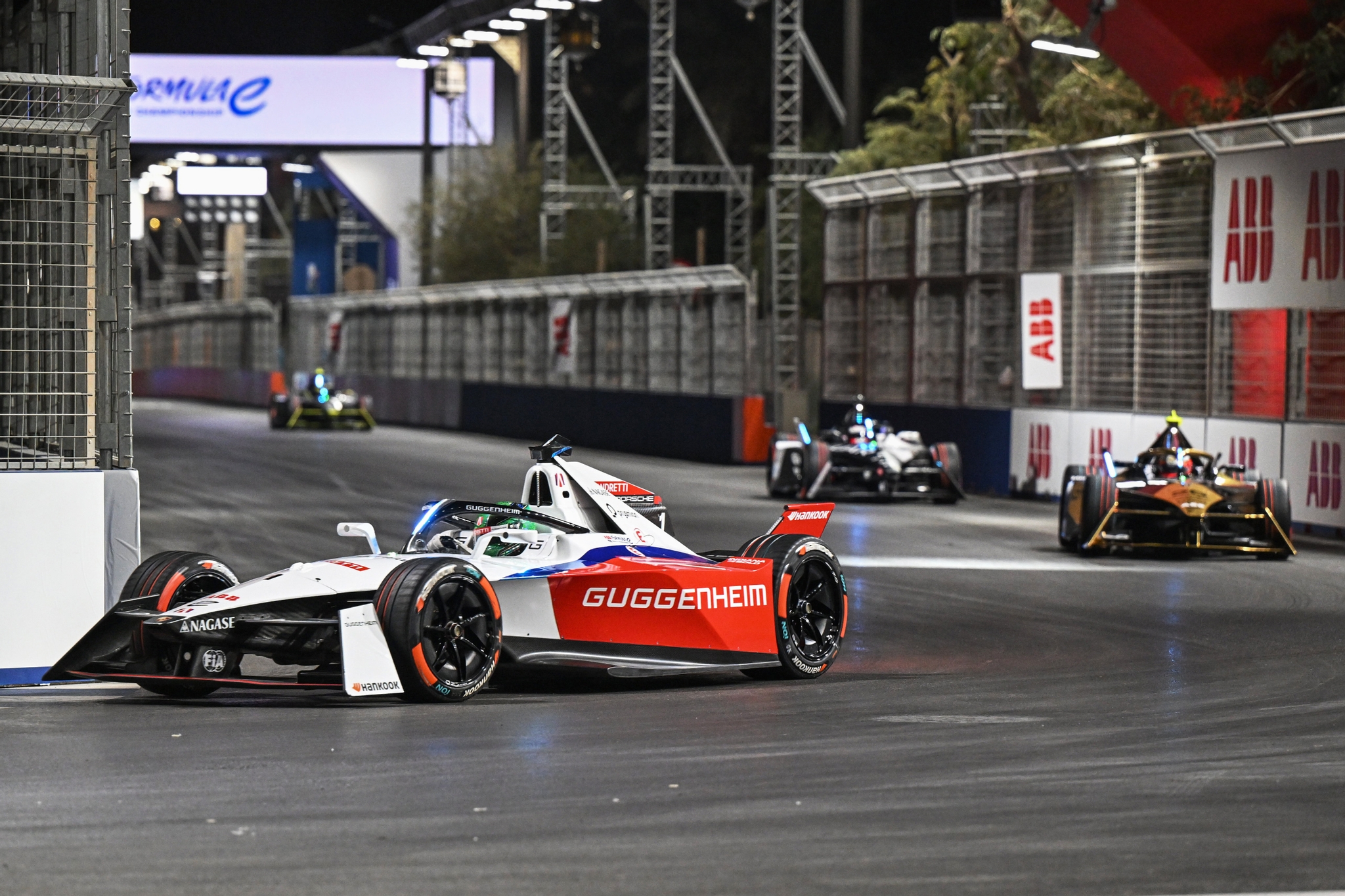
Jake Dennis, Andretti Global, Porsche 99X Electric Gen3 Image Credit: Formula E Media Bank
Round 3:
Round three saw an unexected pole position from the returning Oliver Rowland at Nissan ahead of Robin Frijns in P2 and Nick Cassidy in P3. Frijns managed to take the lead away from Rowland at the start with Ticktum having to pit with front wing damage, this eventually caused the Brit to retire. Cassidy maintained P3 at the start with a huge train of cars following each other, but as the attack modes began to be taken, the Kiwi found himself at the front. And from there, he controlled the entire race, buiding up a gap to allow himself to remain in P1 when attack mode had been completed. However, despite this, Frijns was able to stay within about two seconds of Cassidy for the entire race, a constant threat lurking at the back of the Kiwi’s Jaguar. Sam Bird, who was having a quiet race, managed to make a move on Sette Camara for P9. In a tactical move by drivers, many did not take any attack mode so they could use it at the end of the race – however, this did not apply to the top five.
Rowland managed to get within a second of Frijns, who in turn was closing in on Cassidy. Bird attempted a a move on Sacha Fenestraz but he misjudged it, falling behind Wehrlein and eventually, the McLaren man was forced to retire. Jehan Daruvala had an issue with his brakes and was forced to stop at turn 18, causing a yellow flag. Cassidy began to worry about his consumption of energy in the latter part of the race. As the time ticked down, it emerged that Dennis, Evans, Da Costa, Nato and Sette Camara were all under investigation for overtaking under yellow flags. However, this didn’t stop Nick Cassidy from taking his first win at Jaguar. He held off Frijns who finished P2 in his return to Envision Racing ahead of Rowland who managed to secure a podium. Hughes finished just outside of the podium positions, ahead of Vandoorne. Fenestraz claimed P6 ahead of Wehrlein in P7, Vergne clinched P8 with Gunther taking P9 and Dennis taking the final point. The current world champion also took the fastest lap, however, after investigation, Dennis received a five second time penalty promoting Evans to P10 and Cassidy took the point for fastest lap, alongside the championship lead.
Formula E will return in March.
